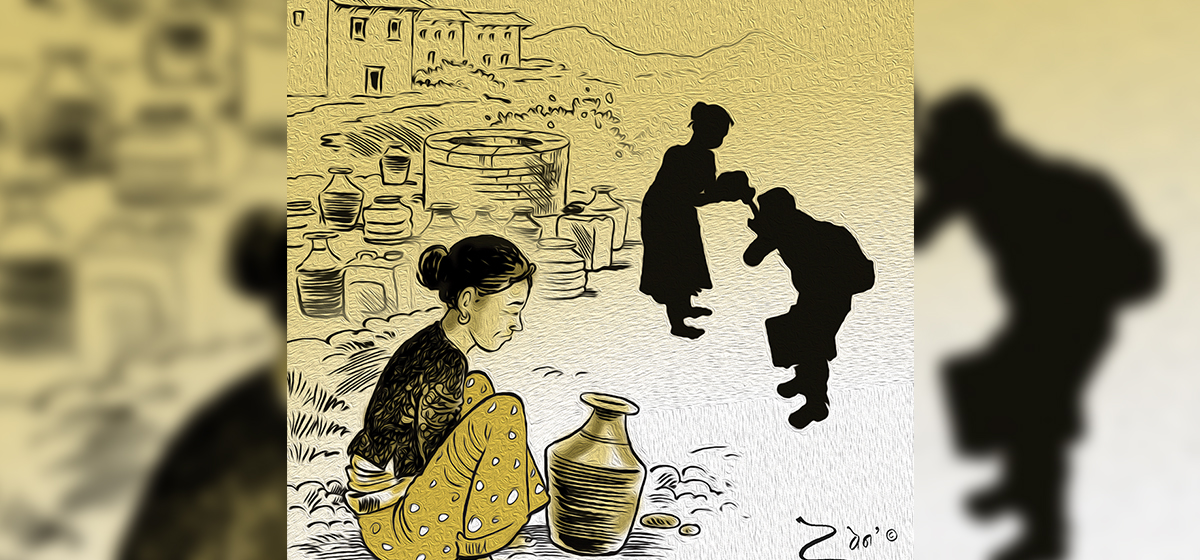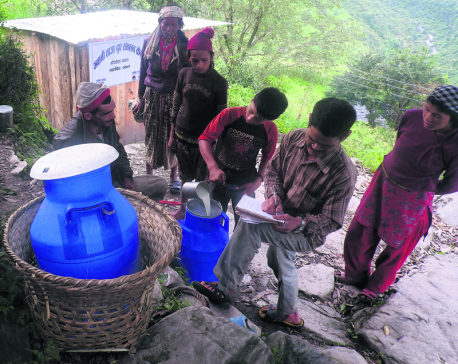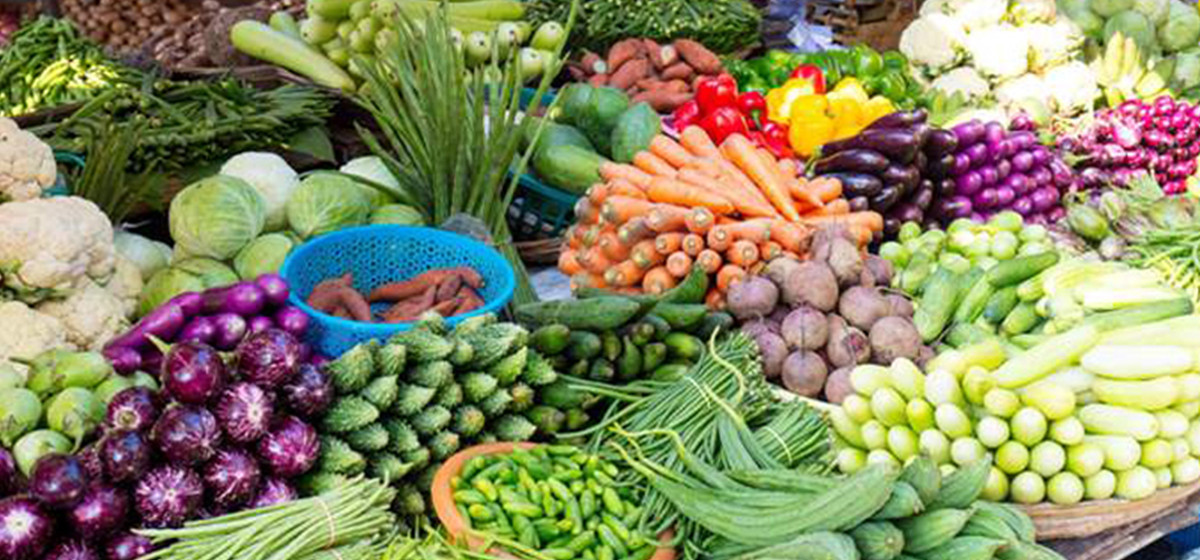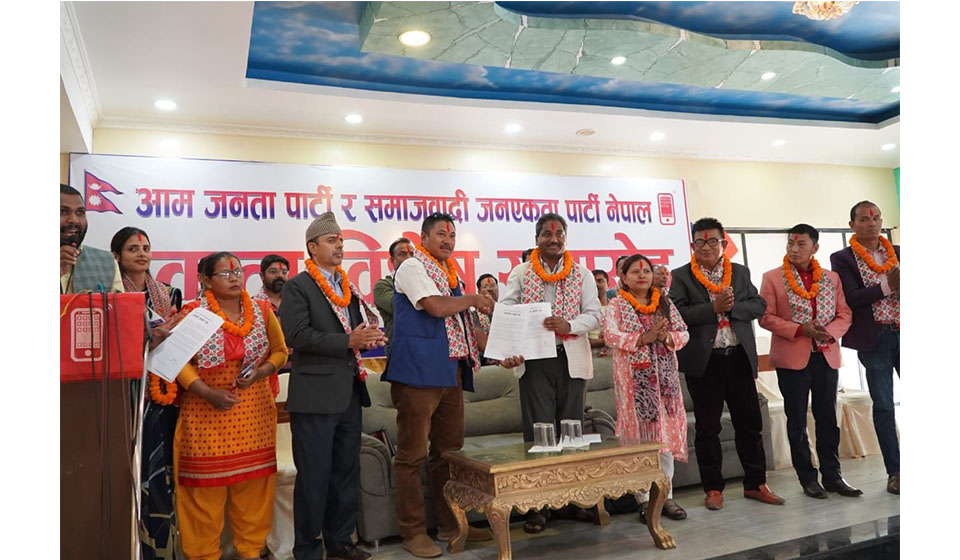
OR
Dalit representation in executive positions taking back seat
Published On: April 27, 2023 08:30 AM NPT By: Republica | @RepublicaNepal

KATHMANDU, April 27: It has been 14 years since Nepal embarked on a historic transition to switch to a federal democratic republic system. Achievements were possible as a result of people's prolonged and tremendous struggle.
The very first meeting of the Constituent Assembly on May 28, 2008 declared Nepal as a federal democratic republic with the abolition of a 240-year-old monarchy. Prior to this, Nepal went through significant political transformations at different times such as the revolution of 1951, the 1990 People's Movement, the Maoist war and the 2006 People's Movement II.
Over the course of 14 years since the announcement of the federal democratic republic in Nepal, the country has gone through many political changes, but there has been no substantive transformation in the lives of the people. On top of that, the situation of the Dalits, the deprived community, remains as it is. The situation has got to the point that against structural inequalities and caste-based discriminations, the Dalit community has built up agencies to retain and revolt against layers of discrimination against them.
They have a history that they have united for their rights since 2004 BS. Despite their active participation in politics, their economic, social and political issues have not been mainstreamed. When we assess the existing scenario, it is clear that only a handful of the Dalits represent their community in the executive and the parliament (legislature).
In the current House of Representatives (HoR), Dalits make up just 5.81 percent with 16 members out of which 15 were elected through proportional representation and one through direct election. The Lower House has a total of 275 members.
In the first House of Representatives formed after the promulgation of the Constitution through the historic Constituent Assembly, the Dalit representation was six percent with the presence of 19 Dalit lawmakers. In the first 2008 CA, 51 Dalits (8.48) percent) represented their community in the 601-member assembly, and the figure dropped to 41 (6.82 percent) in the second CA formed following the 2013 elections.
According to Dalit leaders, the data itself is a testimony that the Dalit representation in the legislation is regressive against the anticipations for more participation of the community at the decision-making level.
In view of Dalit movement leader Padam Sundas, “The Dalit representation at the decision-making level has been neglected. Dalits have neither strong involvement in the parliament nor in the government." He accused political parties of discriminating against the Dalit during the ticket allocation in elections. In the recent HoR elections, the Dalit candidacy from the Nepali Congress under the first-post-the-past (FPTP) election was nil.
When we go back to history, there had been a Dalit presence in the State power during the Panchayat era. Hira Lal Bishwakarma was the first minister to represent the Dalits in the government, and he was appointed the assistant education minister in 2031 BS. He also served as the assistant minister for education and supplies and as the minister of state four times between 2031-2041 BS.
Hiralal Bishwakarma, Prakash Chitrakar, Lal Bahadur Bishwakarma, Hari Shankar Pariyar, Golchhe Sarki, Pratap Lohar and Man Bahadur Bishwakarma were inducted into the Cabinet during 2031-2063 BS, but they were not given the portfolios as a full minister.
Khadka Bahadur Bishwakarma and Chhabilal Bishwakarma are the first full ministers from the Dalit community who took charge of the Ministry of Women, Children and Social Welfare and the Agriculture and the Cooperatives Ministry respectively in interim government formed on 25 April, 2006 under the leadership of Girija Prasad Koirala.
Since then, Dalit involvement in the Council of Ministers has been taking place, but is not encouraging. Some political leaders from the community, Chhabilal Bishwakarma, Mahendra Paswan, Khadka Bahadur Bishwakarma, Bishendra Paswan, Daljeet Sripaili, Min Bahadur Bishwakarma, Jagat Bahadur Sunar and Maheshwar Jung Gahatraj were inducted into the governments formed thereafter.
After the People's Movement II, Nabin Kumar Bishwakarma, Jeet Bahadur Darjee (Gautam), Khadka Bahadur Basyal, Kawalati Paswan, Dal Bahadur Sunar, Gopi Achhami, Ramani Ram, Dhanmaya BK, Karna Bahadur BK, Bimala BK and Asha BK were appointed as the state ministers.
The incumbent federal government has one minister of state from the Dalit community. The case is enough to say that the Dalit representation in the executive is getting a back seat over the course of time, and it is against the spirit of the Constitution which in its preamble promises to end discriminations relating to class, caste, region, language, religion and gender discrimination including all forms of racial untouchability, in order to protect and promote unity in diversity, social and cultural solidarity, tolerance and harmonious attitudes, expressing determination to create an egalitarian society on the basis of the principles of proportional inclusion and participation, to ensure equitable economy, prosperity and social justice.
The Article 40 which talks about the Right of Dalits ensures that the Dalits shall have the right to participate in all agencies of the state based on the principle of proportional inclusion. There shall be special legal provision of empowerment, representation, and participation of the Dalit community in employment opportunities in other streams including the public service (1), and Article 42 which is about the right to social justice states socially backward women, Dalits, Adibasi, Janajati, Madhesi, Tharu, minority groups, persons with disability, marginalized groups, Muslim, backward classes, gender and sexual minority groups, youths, peasants, laborers, the oppressed and the citizens of backward regions, and economically poor Khas Arya shall have the right to employment in state structures on the basis of the principle of inclusion (1).
But, the main spirit of the Constitution was not reflected during the latest HoR election and during the course of the government formation while the nation is in the course of implementing the federal democratic republic system.
Despite the declaration to ensure equitable economy, prosperity and social justice, the Dalits who make up 14 percent of total populace have remained as a neglected community.
With political transformation at home, the level of awareness has increased among the Dalits against centuries-old caste system, untouchability, discrimination and deprivation of opportunities they face since the time of their ancestors.
Representation of the Dalit community that was left far behind for ages in terms of economic, social and political factors has been low in the parliament, a place where laws are made. Political parties in their election manifestos have promised special rights for the community as per the principle of compensation and ensure their proportional representation at all federal, provincial and local levels. But, the election manifestos have been limited only to papers.
Out of the total 550 members in the provincial assemblies, only 31 are from the Dalit community, which is 5.63 percent. Out of the 31, two were elected under the first-past-the-post electoral system, and others under the proportional representation. Let’s take a look at the figure province-wise. Only four of the total 56 PA members in Koshi Province are from the Dalit community, which is 7.14 percent. Likewise, Madhes Province has got seven PA members elected from the community out of the total 64. The number is 10.93 percent.
Bagmati Province has low representation from the community. Only two of the total 66 PA members are from the community. The figure is 3.03 percent. Gandaki Province has the highest number of representatives from the community. It has six PA members from the community out of the total 36 members, which is 16.66 percent. Five of the total 24 PA members in Karnali Province are from the community (one under the FPTP). In Sudurpaschim Province, three of a total of 32 members are from the community, which is 9.37 percent.
The proportional representation system is said to be a special provision for electing the people especially from the backward, suppressed and marginalized communities. But, lately there is a trend that PR seats are distributed to those who have access to power, and those who have money, says Janata Samajwadi leader Durga Sob.
Seven of the 58 members in the National Assembly (Upper House) are from the Dalit community as per the provision that seven each from seven provinces will be appointed as NA members. No people from the community have been appointed as NA members outside the quota.
CPN (Maoist Centre) leader Parshuram Ramtel blamed factors like the Dalit movements being weakened, Dalit leaders failing to advocate for their cause within the respective party, movements by marginalized people becoming weak, and political parties being apathetic about inclusive issues, for low representation of the Dalit community in the parliament.
Sob has demanded representation of the community in the parliament and the government based on the population of the community. The preamble of the constitution has stated the building of equitable society based on the principle of proportional inclusiveness and participation. But, its effective implementation is still awaited.
Lawmaker Kamala Bishwakarma has accused political parties of failing to ensure representation of the Dalit community in the parliament and the government as per their election manifestos.
(RSS)
You May Like This

Capitalism and Dalits
According to Marxism, history is all about the struggle between bourgeois and proletariats, former seeking to enrich themselves, latter fighting... Read More...

No toilets for Dalits in ODF Rukum
RUKUM, Feb 20: Rukum was declared an Open Defecation Free (ODF) zone on December 22, 2014, after the successful construction of... Read More...

Where Dalits can’t buy milk
BAJHANG, April 18: Though Kalpana Nepali is aware her caste can put her in difficult position, it’s not possible for her... Read More...


Just In
- Sunkoshi-Marin Diversion Project’s tunnel construction nears completion, breakthrough scheduled for May 8
- Govt tightens security arrangement for Third Investment Summit 2024
- Pesticide residue found in vegetables in Nepalgunj
- Aam Janata Party and Samajwadi Jana Ekata Party merge
- 1,600 participants confirmed for Nepal Investment Summit
- Ilam-2 by-elections held peacefully, vote count likely to start tonight
- NEA schedules five-day power cut across Kathmandu Valley for underground cable installation
- Hundreds of passengers including foreign tourists in distress as poor visibility halts flights to and from PRIA







-1200x560-wm_20240427144118.jpg)






Leave A Comment